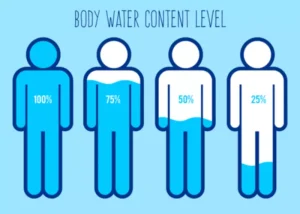
Lack of consensus around target outcomes also presents a challenge to evaluating the effectiveness of nonabstinence treatment. Experts generally recommend that SUD treatment studies report substance use as well as related consequences, and select primary outcomes based on the study sample https://ecosoberhouse.com/ and goals (Donovan et al., 2012; Kiluk et al., 2019). While AUD treatment studies commonly rely on guidelines set by government agencies regarding a “low-risk” or “nonhazardous” level of alcohol consumption (e.g., Enggasser et al., 2015), no such guidelines exist for illicit drug use.
Spend time self-reflecting
Separate network meta-analyses by intervention types (psychosocial interventions, drug, or combined drug interventions) were conducted to check the robustness of results to the possibility that treatment effects were not transitive across different approaches of studies alcohol abstinence vs moderation to intervention. We also conducted analyses separately for outcomes measured at short, medium, and long term time points. We had planned sensitivity analyses that excluded studies with overall high risk of bias but did not do these owing to sparsity of data.

What is moderation?
While there is evidence that a subset of individuals who use drugs engage in low-frequency, non-dependent drug use, there is insufficient research on this population to determine the proportion for whom moderation is a feasible treatment goal. However, among individuals with severe SUD and high-risk drug or alcohol use, the urgency of reducing substance-related harms presents a compelling argument for engaging these individuals in harm reduction-oriented treatment and interventions. Multiple theories of motivation for behavior change support the importance of self-selection of goals in SUD treatment (Sobell et al., 1992). For example, Bandura, who developed Social Cognitive Theory, posited that perceived choice is key to goal adherence, and that individuals may feel less motivation when goals are imposed by others (Bandura, 1986). Miller, whose seminal work on motivation and readiness for treatment led to multiple widely used measures of SUD treatment readiness and the development of Motivational Interviewing, also argued for the importance of goal choice in treatment (Miller, 1985). Drawing from Intrinsic Motivation Theory (Deci, 1975) and the controlled drinking literature, Miller (1985) argued that clients benefit most when offered choices, both for drinking goals and intervention approaches.
4. Consequences of abstinence-only treatment
- However, the extent of their problems according to ICD-10 (International Statistical Classification of Diseases and Related Health Problems, 10th edition) or DSM 5 (Diagnostic and Statistical Manual of mental disorders, 5th edition) was not measured.
- About 10% of individuals who report cannabis use in the past year meet criteria for a cannabis use disorder, while this proportion increases to 18%, 19%, 58%, and 65% of those with past year use of cocaine, opioids (misuse), methamphetamine, and heroin, respectively.
- The motivational enhancement and the couple therapy show potential amelioration for alcohol abstinence.
- These individuals are considered good candidates for harm reduction interventions because of the severity of substance-related negative consequences, and thus the urgency of reducing these harms.
- People who battle addiction can hurt themselves, hurt others, damage their health, make irresponsible choices and even risk prison time or death.
However, when someone starts on a journey of sobriety, it doesn’t necessarily mean they are committing to a lifetime of abstinence. They may have adopted a sobriety challenge, such as Sober September or Dry January in order to gain the space to re-evaluate their relationship with alcohol. More people than ever are recognizing the negative effects of drinking alcohol and re-evaluating how it shows up in their life. As a physician on the Monument platform, I speak with patients every day who are looking to change their drinking habits in order to improve their health and happiness. Once they’ve decided they want to make a change, a question many people find themselves asking is whether sobriety or moderation is a better option for them.


We focus our review on two well-studied approaches that were initially conceptualized – and have been frequently discussed in the empirical literature – as client-centered alternatives to abstinence-based treatment. Of note, other SUD treatment approaches that could be adapted to target nonabstinence goals (e.g., contingency management, behavioral activation) are excluded from the current review due to lack of relevant empirical evidence. The past 20 years has seen growing acceptance of harm reduction, evidenced in U.S. public health policy as well as SUD treatment research.
You might find yourself constantly preoccupied with thoughts about when you’ll have your next drink or whether you’re staying within your limits – this constant monitoring can create stress and mental exhaustion over time. Moreover, in committing to a moderate drinking plan, it’s essential to recognise that slip-ups can happen and these instances should not discourage you from continuing on your path towards moderation management, but rather serve as reminders of why moderation is necessary in the first place. Administrative discharge due to substance use is not a necessary practice even within abstinence-focused treatment (Futterman, Lorente, & Silverman, 2004), and is likely linked to the assumption that continued use indicates lack of readiness for treatment, and that abstinence is the sole marker of treatment success.

Network Geometry and Synthesis of Results
- It was hypothesized that patients whose drinking goals were oriented towards complete abstinence would have better treatment outcomes as indexed by a greater percentage of days abstinent, longer period until relapse, and an overall higher global clinical outcome.
- Acamprosate is the only intervention with enough evidence to conclude that it is better than placebo in supporting detoxified, alcohol dependent patients to maintain abstinence for up to 12 months in primary care settings.
- The past 20 years has seen growing acceptance of harm reduction, evidenced in U.S. public health policy as well as SUD treatment research.
- To enable all studies to be included, in the main analysis we combined results reported at the nearest time point to 12 months from each study.
- An additional concern is that the lack of research supporting the efficacy of established interventions for achieving nonabstinence goals presents a barrier to implementation.
- Abstinence may be a necessary recovery component for some individuals with AUD, yet research indicates that it is not essential for all, and positive changes in functioning and well-being often are more fundamental elements.
Your thoughts, feelings, and behaviours all play a role in how you manage your alcohol consumption. It’s important to acknowledge any emotional ties you might have to alcohol as these could make both moderation and complete abstinence more challenging. Recognise patterns of thought that lead to excessive drinking like stress, boredom or loneliness; addressing these underlying issues is often a key part of cutting down or cutting out alcohol.
- Medication makes it easier to put the brakes on after a drink or two, and sticking to moderation is challenging without it.
- However, to date there have been no published empirical trials testing the effectiveness of the approach.
- All the interviewees had attended treatment programmes based on the 12-step philosophy, and they all described abstinence as crucial to their recovery process in an initial interview.
- The purpose of this paper is to investigate how clients – five years after completing treatment interventions endorsing abstinence – view abstinence and the role of Alcoholics Anonymous (AA) in their recovery process.
Individuals with expected membership in Class 5 (low risk and heavy drinking) had a low probability of abstinence days during treatment, whereas individuals in Class 6 (abstinence and low risk drinking) had a higher probability of abstinence days throughout treatment. Some days of abstinence during treatment may be important for longer term functioning among those engaging in low risk drinking during treatment. Those with greater dependence severity were unlikely to be classified as low risk drinkers during treatment and clinicians may consider assessing dependence severity in developing intervention strategies and collaborating with patients regarding the selection of abstinence or low risk drinking goals. Cognitive behavioral therapy (CBT) for alcoholism has received empirical support since the 1980s (Marlatt & Gordon, 1985). CBT for alcohol use disorders is grounded in social-cognitive theory (Bandura, 1986) and employs skills training in order to help patients cope more effectively with substance use triggers, including life stressors (Longabaugh & Morgenstern, 1999; Morgenstern & Longabaugh, 2000).
- While abstinence refers to behaviour, sobriety goes deeper and concerns the roots of the problem (addiction) and thereby refers to mental and emotional aspects.
- When out for a nice dinner or attending a get-together, she still wanted the freedom of having a drink or two.
- Despite the growth of the harm reduction movement globally, research and implementation of nonabstinence treatment in the U.S. has lagged.
- But if they have a problem with alcohol, taking a harm reduction approach could be a constructive way to help them take a look at the negative consequences of their behavior and motivate them to make positive changes.
- Our primary effectiveness outcome was continuous abstinence as reported by the trial authors.
- In the present follow-up, the recovery process for clients previously treated for SUD was investigated, focusing on abstinence and CD.

